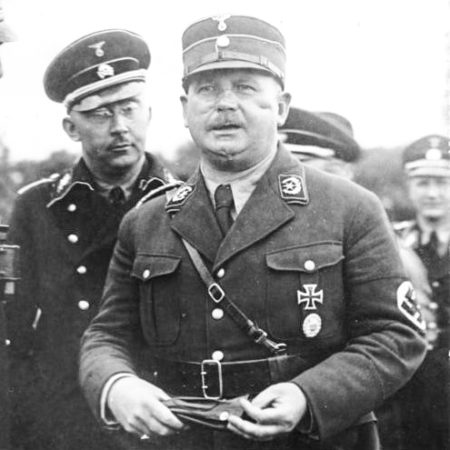In the past, I’ve written about several of France’s most infamous serial killers (The Parisian Bluebeard is Guillotined (click here to read) and Dr. Jekyll and Mr. Hyde (click here to read). I thought with our blog today, we’ll move on to Berlin and introduce you to the “S-Bahn” serial killer. (The Berlin S-Bahn is a rapid transit railway system akin to the RER, the Paris suburban train line⏤the U-Bahn is Berlin’s underground railway system.)
Like his French counterparts, this German killer met the same fate.
Did You Know?
Did you know that Hugo Boss (1885−1948) was a fanatical Nazi? Boss was a German fashion designer and founder of Hugo Boss AG. Prior to serving in the German army during World War I, Boss ran his parents’ lingerie shop in Metzingen, Baden-Wuerttemberg (southwest Germany). After the war, Boss returned to Metzingen and started his own company beginning with the creation of shirts, jackets, and work clothing. Boss joined the National Socialist German Worker’s Party (NSDAP), or Nazi party in 1931 after more than three years of supplying the NSDAP with uniforms for Hitler’s Sturmabteilung (SA), or “Brownshirts.” He immediately became a sponsoring member of the Schutzstaffel (SS) and over the next ten years, Boss joined various Nazi sponsored organizations resulting in greater revenue for his company.
While the black uniforms of the SS were designed by members of the Schutzstaffel, the Hugo Boss company manufactured them (and likely had input to the design). By 1938, the company turned its attention to creating and manufacturing uniforms for the Wehrmacht, Hitler Youth, and the Waffen-SS (i.e., the armed division of the Schutzstaffel). About 180 Polish and French women were forced to work as slave labor in the Hugo Boss factory.

During the denazification process after the war, Boss was categorized as an “Offender” who profited from the Nazis and the war. However, upon appeal, he was re-classified as a “Follower” but still banned from running the business (his son-in-law took over). Why did it take until 2011 for the company to issue an apology for its role in the war and the use of forced labor? I could not find a section in the company’s website about its history or founder. This is not surprising. Most German companies do not highlight their activities or affiliations during the rise of the Third Reich or World War II (click here to read the blog, An African American in Paris).
I’d like to thank Martin B. for sharing the story of Hugo Boss with me and suggesting we incorporate it into one of the blogs.
Paul Ogorzow
Paul Ogorzow (1912−1941) was born in East Prussia (now Poland). He was the illegitimate son of a farm worker, Marie Saga. By the time he was twelve, Paul had been adopted by Johann Ogorzow and Paul eventually took Johann’s surname as his own. Working in a steel foundry, Ogorzow joined the Nazi party in 1931 and became a member of Hitler’s paramilitary Sturmabteilung (SA), or “Brownshirts.” After the Nazis took power in 1933, Ogorzow received promotions ultimately ending as a Scharführer, or SA squad leader. One year later, Ogorzow was hired to work for the national railroad, Deutsche Reichsbahn. Read More The S-Bahn Serial Killer
